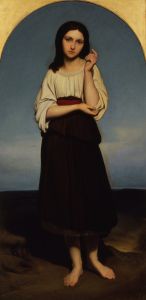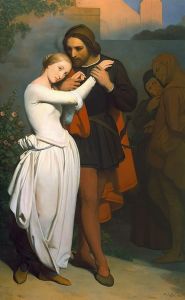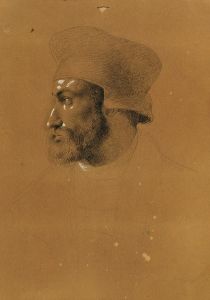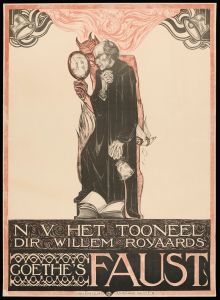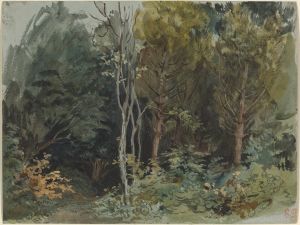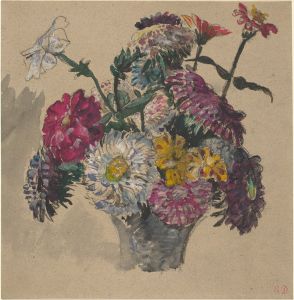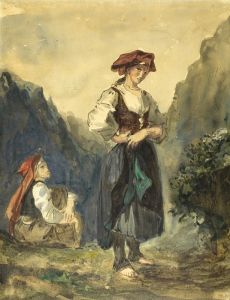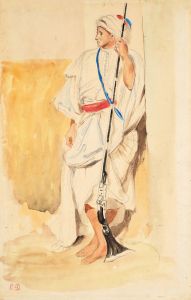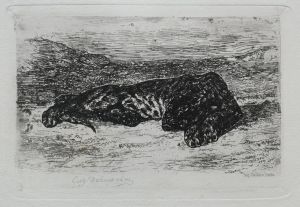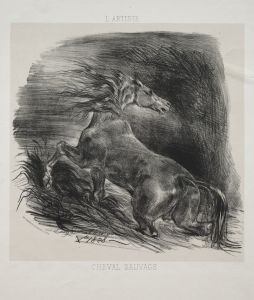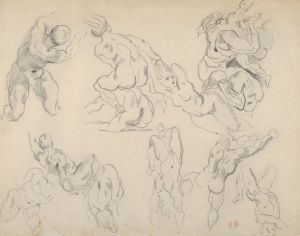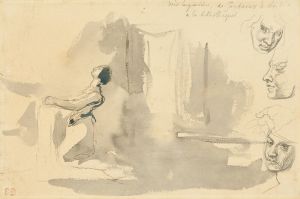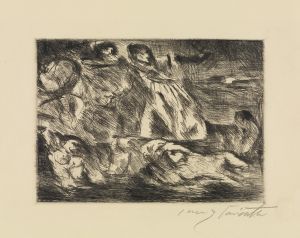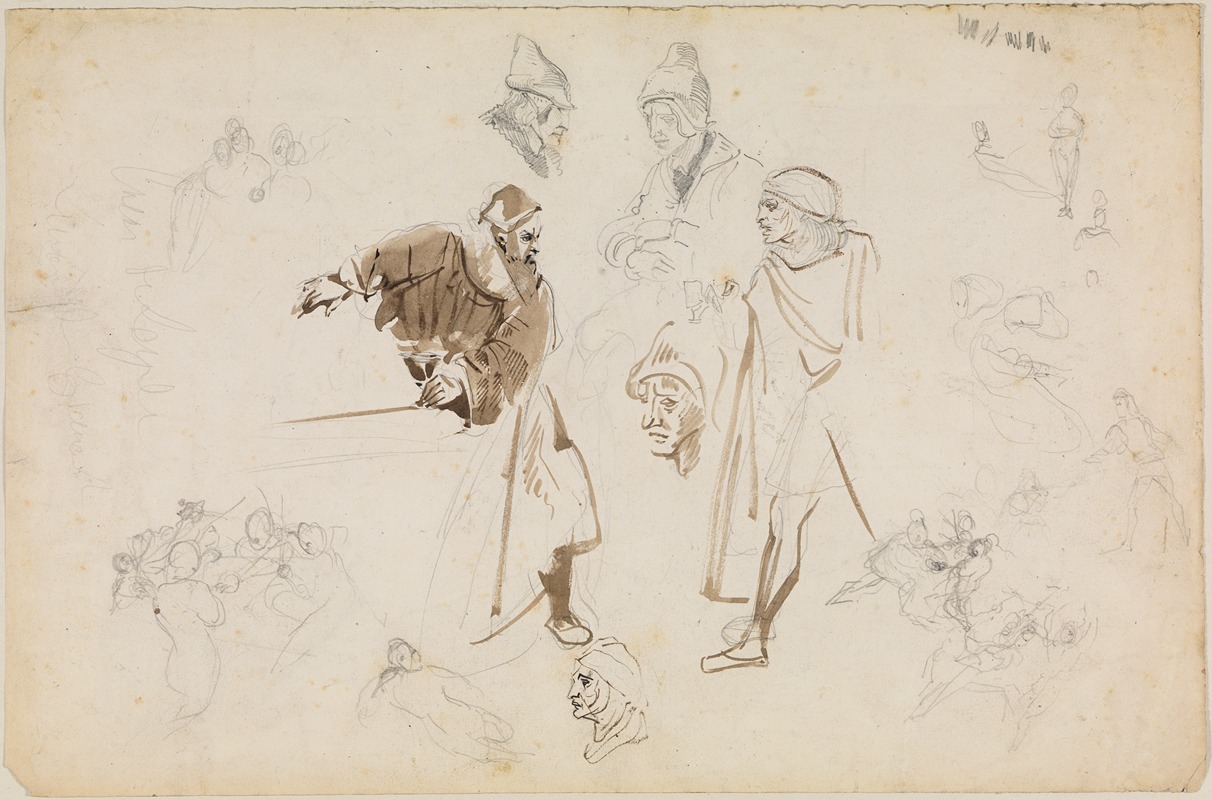
Studienblatt zu ‘Faust’
A hand-painted replica of Eugène Delacroix’s masterpiece Studienblatt zu ‘Faust’, meticulously crafted by professional artists to capture the true essence of the original. Each piece is created with museum-quality canvas and rare mineral pigments, carefully painted by experienced artists with delicate brushstrokes and rich, layered colors to perfectly recreate the texture of the original artwork. Unlike machine-printed reproductions, this hand-painted version brings the painting to life, infused with the artist’s emotions and skill in every stroke. Whether for personal collection or home decoration, it instantly elevates the artistic atmosphere of any space.
Eugène Delacroix, a leading figure of the French Romantic movement, is renowned for his vivid and expressive use of color and his dynamic compositions. Among his numerous works, Delacroix's engagement with literary themes is particularly notable, and one of his significant contributions in this regard is his series of illustrations for Johann Wolfgang von Goethe's "Faust." The "Studienblatt zu ‘Faust’" is one such work that reflects Delacroix's deep interest in the dramatic and emotional potential of Goethe's text.
Delacroix's fascination with "Faust" began in the early 1820s, a time when the Romantic movement was gaining momentum in Europe, characterized by an emphasis on emotion, individualism, and the glorification of the past and nature. Goethe's "Faust," with its complex exploration of human ambition, desire, and the supernatural, provided fertile ground for Delacroix's artistic exploration. The "Studienblatt zu ‘Faust’" is part of a series of lithographs that Delacroix created, which were published in 1828. These works were among the first major illustrations of Goethe's text and played a significant role in popularizing the story in France.
The "Studienblatt zu ‘Faust’" showcases Delacroix's skill in capturing the essence of Goethe's characters and the dramatic tension of the narrative. Delacroix's approach to illustrating "Faust" was innovative for its time, as he sought to convey the psychological depth and complexity of the characters rather than merely depicting the literal events of the story. His use of dynamic compositions and expressive gestures reflects the inner turmoil and existential struggles faced by the characters, particularly Faust and Mephistopheles.
Delacroix's lithographs for "Faust" were well-received and contributed to his growing reputation as a master of Romantic art. The series demonstrated his ability to translate literary themes into visual form, capturing the imagination of his contemporaries and influencing future generations of artists. The "Studienblatt zu ‘Faust’" and other works in the series are notable for their dramatic use of light and shadow, which enhances the emotional intensity of the scenes depicted.
In addition to their artistic merit, Delacroix's illustrations for "Faust" are significant for their role in the broader cultural exchange between France and Germany during the 19th century. By engaging with Goethe's work, Delacroix helped introduce German Romantic literature to a French audience, fostering a greater appreciation for the literary and artistic achievements of both nations.
Overall, the "Studienblatt zu ‘Faust’" by Eugène Delacroix is a testament to the artist's ability to capture the spirit of Romanticism through his innovative approach to illustration. His work not only reflects the themes and emotions of Goethe's "Faust" but also exemplifies the broader cultural and artistic currents of the time. Delacroix's illustrations remain an important part of his legacy, highlighting his contribution to the visual interpretation of literary classics.





